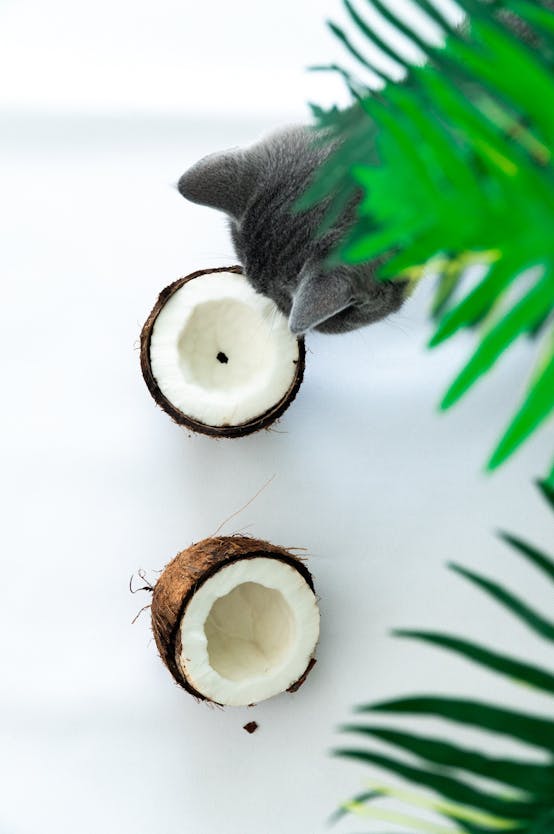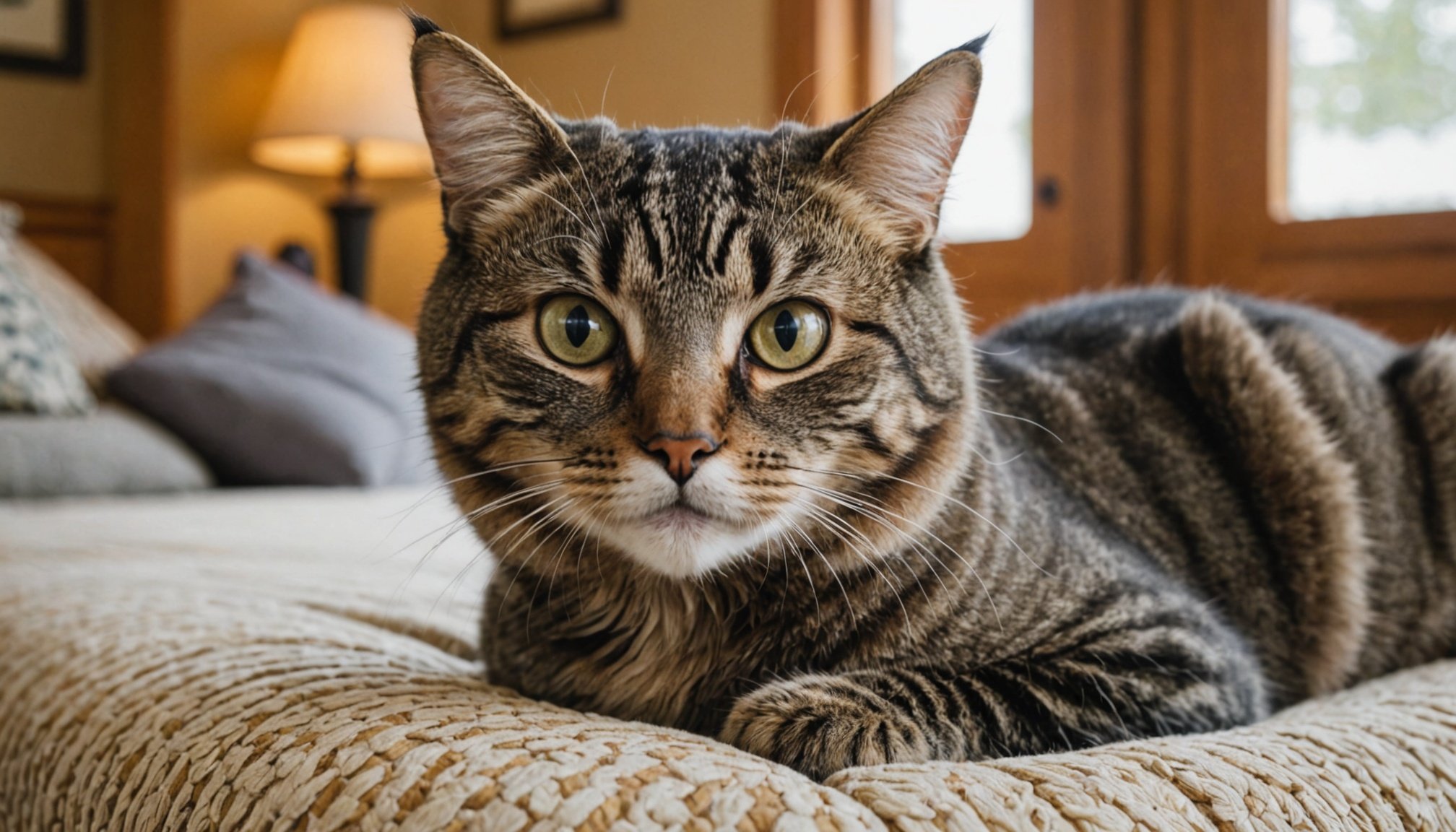Transforming Your Space: A Complete Guide to Designing a Senior Cat-Friendly Home Environment
As your feline friend ages, their needs and preferences can significantly change. Creating a senior cat-friendly home environment is crucial for ensuring their comfort, safety, and overall well-being. Here’s a comprehensive guide to help you transform your space into a haven for your aging cat.
Understanding the Needs of Senior Cats
Senior cats, typically those over the age of 7, face unique challenges that younger cats do not. Their physical abilities may decline, and they may experience health issues such as arthritis, dental problems, and sensory impairments. Here are some key considerations when designing a home environment for your senior cat:
Cela peut vous intéresser : How to Safely Introduce Your Cat to Motorized Pet Toys: Tips to Minimize Fear and Anxiety
Prioritize Preventive Care
Regular veterinary visits are essential for senior pets. Biannual wellness exams can help catch potential health issues before they become serious. Conditions like kidney disease, diabetes, or arthritis may not show obvious signs initially, so preventive care is vital[2].
Nutrition and Diet
Senior cats need tailored diets to maintain energy levels and manage weight-related issues. Overfeeding can lead to obesity, which worsens joint pain and can lead to diabetes. Consult with your veterinary team to design a customized nutrition plan that meets your cat’s specific needs[2].
Avez-vous vu cela : Stress-Free Techniques for Administering Eye Drops to Your Cat Suffering from Conjunctivitis
Designing a Safe and Comfortable Space
Creating a safe and comfortable space for your senior cat involves several key elements.
Adjust Your Home for Senior Pet Comfort
Minor modifications around the home can significantly improve your cat’s comfort. Here are some tips:
- Use Pet Ramps: Installing pet ramps can help your cat navigate stairs or high places without straining their joints.
- Comfortable Bedding: Ensure your cat has access to comfortable bedding in quiet, easily accessible areas.
- Maintain Consistency: Avoid moving furniture or adding new items to the environment, as this can cause stress and confusion for your cat[2].
Create Vertical Spaces
Cats love vertical spaces, and this is especially true for senior cats who may need to conserve energy.
- Cat Trees and Shelves: Invest in cat trees or wall-mounted shelves that allow your cat to climb and observe their surroundings without exerting too much effort. These vertical spaces provide both physical exercise and mental stimulation[1][4].
- Scratching Posts: Include scratching posts and pads to help maintain your cat’s nail health and provide a comfortable place to stretch.
### Example of Vertical Space Design
| Feature | Description | Benefits |
|
|-----------------------------------------------------------------------------|
|
| Cat Trees | Multi-level structures with perches and scratching surfaces | Provides vertical space, exercise, and mental stimulation |
| Wall-Mounted Shelves | Elevated shelves attached to the wall | Offers a place to rest, observe, and feel secure |
| Scratching Posts | Vertical or horizontal posts covered with scratching material | Helps maintain nail health, stretches muscles, and reduces furniture damage |
Incorporating Sensory Enrichment
Sensory enrichment is crucial for keeping your senior cat engaged and stimulated.
Add Sensory Features
Enhance your home environment with sensory elements that cater to your cat’s natural curiosity:
- Visual Stimulation: Place bird feeders or other wildlife-watching opportunities near windows.
- Olfactory Enrichment: Use cat-safe plants or herbs that provide interesting smells.
- Auditory Stimulation: Play calming music or nature sounds to create a soothing atmosphere[1].
Interactive Toys
Interactive toys can help keep your cat’s mind sharp and active.
- Puzzle Feeders: Use puzzle feeders that challenge your cat to work for their food, keeping them mentally stimulated.
- Sensory Toys: Incorporate toys with different textures, smells, and sounds to keep your cat engaged[2].
Ensuring Safety and Accessibility
Safety and accessibility are paramount when designing a home environment for senior cats.
Safe Outdoor Exploration
If your cat enjoys the outdoors, consider creating a safe outdoor space:
- Catios: Build or purchase a catio, a secure outdoor enclosure that allows your cat to explore safely. Include features like built-in shelves, platforms, and ramps for vertical exploration[1][3].
- Heated Enclosures: For colder months, ensure the catio is heated and protected from the elements to prevent frostbite and keep your cat warm.
Avoiding Hazards
Make sure your home is free from hazards that could harm your senior cat:
- Toxic Plants: Remove any toxic plants such as azaleas, rhododendrons, and oleander from your home and garden[3].
- Slippery Surfaces: Use non-slip mats or rugs to prevent your cat from slipping and falling.
Creating Cozy Lounging Areas
Senior cats appreciate comfortable and cozy lounging areas where they can rest and relax.
Cat Beds and Hammocks
Provide soft, comfortable beds or hammocks in quiet areas of your home. These can be placed in sunny spots or near windows for optimal comfort and view[1].
DIY Cat Beds
You can also create DIY cat beds using old blankets or pillows. Here’s a simple guide:
- Choose a Quiet Spot: Select a quiet, easily accessible area for the bed.
- Use Comfortable Materials: Use soft blankets or pillows to create a cozy bed.
- Keep it Clean: Regularly clean the bed to ensure it remains comfortable and hygienic.
Supporting Your Senior Cat’s Mental Health
Mental stimulation is as important as physical health for senior cats.
Mental Stimulation Activities
Engage your cat in activities that keep their mind sharp:
- Teach Simple Tricks: Teach your cat simple tricks or commands to keep them mentally active.
- Use Puzzle Toys: Use puzzle toys that challenge your cat to find treats or kibble.
- Scent Games: Use scent to enhance games like fetch or hide-and-seek, helping your cat identify key areas[2].
Managing Cognitive Dysfunction Syndrome (CDS)
Some senior cats may experience CDS, a condition similar to dementia. Signs include disorientation, changes in sleep patterns, and decreased interaction. Here are some tips to manage CDS:
- Keep the Environment Consistent: Maintain a consistent environment to reduce stress and confusion.
- Use Sound Cues: Use sound cues like a water fountain or squeaky toys to help your cat navigate their surroundings.
- Engage in Interactive Activities: Engage your cat in interactive activities to keep their mind active and stimulated[2].
Practical Tips and DIY Projects
Here are some practical tips and DIY projects to make your home more cat-friendly:
DIY Cat Shelves
Creating DIY cat shelves is a great way to provide vertical space without breaking the bank.
- Materials Needed: Wood planks, brackets, screws, and a drill.
- Instructions:
- Measure the wall space where you want to install the shelves.
- Cut the wood planks to the desired length.
- Attach the brackets to the wall and place the shelves on them.
- Ensure the shelves are sturdy and secure.
DIY Scratching Post
A DIY scratching post can be a fun and cost-effective way to provide your cat with a place to scratch.
- Materials Needed: Cardboard tube, carpet remnants, glue, and a base.
- Instructions:
- Wrap the carpet remnants around the cardboard tube.
- Glue the carpet in place.
- Attach the tube to a base to prevent it from tipping over.
- Place the scratching post in a convenient location.
Transforming your home into a senior cat-friendly environment is a thoughtful and necessary step to ensure your feline friend’s comfort and well-being. By incorporating vertical spaces, sensory enrichment, safe outdoor exploration, and cozy lounging areas, you can create a haven that supports your cat’s physical, mental, and emotional health.
As Dr. Jane Smith from Braescroft Animal Clinic notes, “Caring for a senior pet requires extra attention, but the reward is knowing you provide them with a comfortable, happy life as they age.” By following these guidelines and tips, you can make sure your senior cat lives their golden years in comfort and joy.
### Final Checklist for a Senior Cat-Friendly Home
- **Vertical Spaces**: Install cat trees, wall-mounted shelves, and scratching posts.
- **Sensory Enrichment**: Add visual, olfactory, and auditory stimulation.
- **Safe Outdoor Exploration**: Create a catio or heated enclosure.
- **Cozy Lounging Areas**: Provide comfortable beds and hammocks.
- **Mental Stimulation**: Engage your cat in interactive activities and use puzzle toys.
- **DIY Projects**: Create DIY cat shelves and scratching posts.
- **Safety and Accessibility**: Ensure the home is free from hazards and use non-slip mats.
By checking off each of these items, you can ensure your home is a welcoming and supportive space for your senior cat.













